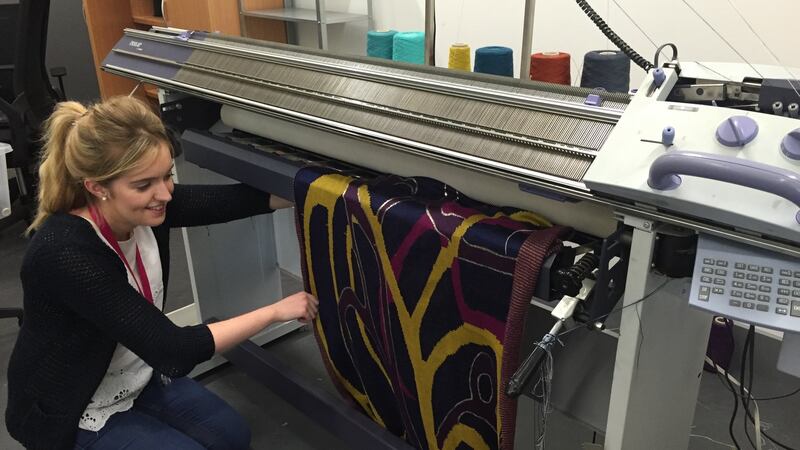A moisture-managing, temperature-regulating fabric developed in collaboration with Ulster University is delivering significant health benefits for people with diabetes and other conditions which interfere with the ability to control body temperature.
Bioflex, a Northern Ireland company specialising in the development of thermal-regulating products, approached Belfast School of Art researcher Alison Gault to identify ways to integrate reactive phase-changing material (PCMs) with various yarns to produce a range of knitted products that would help prevent many of the common discomforts suffered by diabetes patients.
PCMs are substances which absorb or release large amounts of latent heat when they go through a change in their physical state, such as from solid to liquid or gas form. The PCMs selected for this project are nanotechnology-based and the molecules are embedded in the yarn so the changes in state when heat is absorbed and released are not readily apparent.
"People with diabetes have particular difficulty in regulating their body temperature and this can cause the condition to worsen and even result in loss of limbs," Gault explains. "I love collaborating with industry and have worked on several InterTradeIreland Fusion projects. I worked as a designer in manufacturing industry before I moved into academia. I was approached by Trevor Schofield of Bioflex some years ago to work on a project to develop a diabetic sock and I jumped at the chance."

Schofield suffers from diabetes and knows at first hand the difficulties it presents. "While working in China in 2012 Trevor developed an ulceration in his foot which deteriorated despite antibiotics and he subsequently had to have a below-knee amputation," says Gault.
His interaction with the vascular and podiatry teams in Belfast City Hospital led him to explore possible options for prevention and management of this quite common complication of diabetes. “He started his career with Makies so he came from textile background,” Gault adds.
Consultant vascular surgeon Bernard Lee joined the project in 2015. He had already been involved in the development of regional guidelines for diabetic foot management and he helped establish Bioflex with the aim of exploring wearable options, utilising intelligent yarns in the prevention of diabetic ulceration in order to prevent lower limb amputation.
Knitted structures
Using specialised knitting-machine technology, Gault developed knitted structures that would enable Bioflex to produce fabrics that maximise the benefits of the PCMs. The fabric helps maintain body temperature by cooling or warming and prevents abrasion or skin damage which can develop into conditions such as diabetic ulcers or even limb amputation.
The prototype socks were initially produced in the textile facility in Belfast School of Art by Gault, and subsequently manufactured by another Northern Ireland firm, Bridgedale. These socks enhance skin protection, both for the care of the foot in diabetes and for the amputee limb in a prosthesis.
The next stage was to make the fabrics and products smarter still. "Because of impaired sensation in the limb, people with diabetes can often be unaware of the development of skin inflammation and damage," Gault explains. "Putting a sensor in the fabric or near it would allow temperature or moisture build-up to be monitored. Bioflex identified PST Sensors, a company in South Africa, which could develop the sensors."
This led to a system concept for amputees where an embedded sensor is placed in the socket of the prosthesis. The sensor communicates temperature and moisture information to a mobile phone, relays it to a cloud platform to allow ongoing data analysis, and sends a real-time display to the appropriate clinical team responsible for amputee care. The project has received Innovate UK funding, and the clinical study is currently ongoing at Musgrave Park Hospital in Belfast.
“In future, we could put a chip in the sock itself or another garment to send information to an app on a mobile phone,” Gault adds.
The remarkable properties of these phase-changing materials have enabled further innovation which provide enhanced comfort and novel thermal control for people using them. Commercial opportunities for these products are currently being explored.
For the future, Gault continues to work with Bioflex on the development of composite textiles which will further exploit the performance characteristics of the PCMs. “We hope to expand the range of healthcare and other uses for the materials and we are currently at the development and IP protection stage.”










